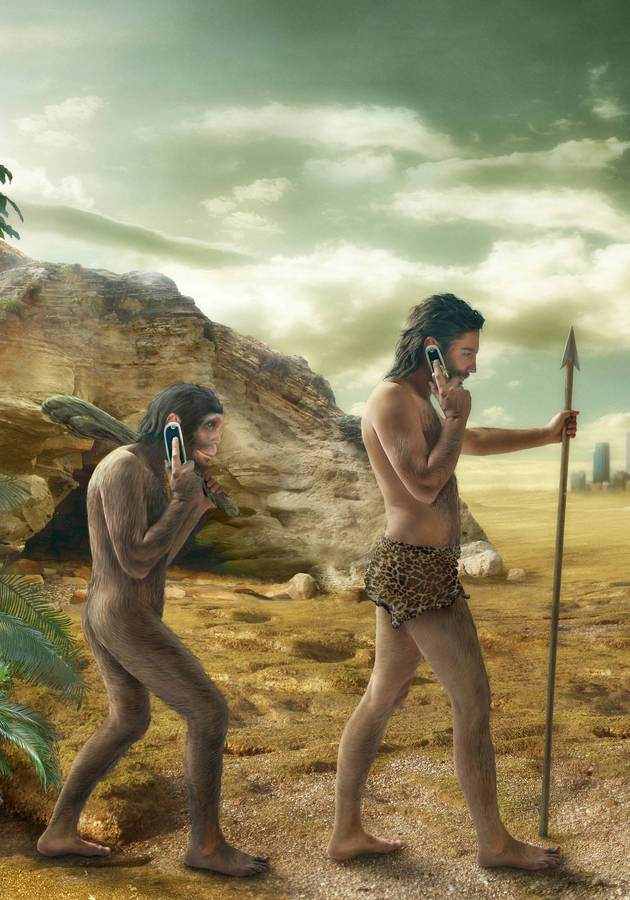You may think that advising your friends or your co-workers is a difficult endeavor, but it's one of the things you do most often and with the utmost ease. It’s not giving advice that is hard and rare: simply put, you just can’t help telling people what to do. And you should – because great leaders rarely do.
In “The Advice Trap” – a follow-up to his debut work and runaway bestseller, “The Coaching Habit” – Michael Bungay Stanier reveals the why and the how’s of becoming more coachlike. “It is a manual, a playbook, a studio, a dojo,” he writes, “that digs deeper into what it takes to change your behavior.” And just like its companion, it is all about making you a better and more humane leader and a more capable and qualified manager of people.
So, get ready to learn “why saying less and asking more matters” and prepare to acquire the tools necessary to “make curiosity an everyday leadership behavior.”
You need to escape the advice trap
People love to give advice: in fact, this may be one of the things that make us human. It’s almost impossible for us to simply listen to someone else’s complaints and merely be curious about their feelings: as soon as they start talking, we’re already planning how to help them. It’s almost as if there is some kind of an ‘advice monster’ lurking somewhere in the vast jungle of our subconscious, ready to jump out the very second someone says something to us. “I’m about to add some value to this conversation!” – it declares. “Yes. I. Am!”
Good intentions aside, there’s a big problem with this type of behavior: it typically helps no one. Not you, not the person you’re talking to. And for a very obvious reason: most of the time our advice doesn’t actually work. We’re either solving the wrong problem because we love to jump in as soon as the first challenge is mentioned in a conversation, or we’re proposing a mediocre solution due to our inherent biases and a severe case of ‘first-idea-itis’ – a common organizational disease that manifests itself in the form of going with “the first solution that sounds feasible and not too weird.”
However, since we can rarely observe the actual effects of our guidance – and since the ‘advice monster’ preys on hitches and glitches (of which there is never too little) – we keep blurting out not-nearly-as-good-as-we-think solutions to all kinds of problems.
And this, in a nutshell, is how the advice trap works: you’re ensnared into constantly advising, although this produces barely any results. In fact, as a management style, advice-giving is not only ineffective, but quite harmful indeed, and you’re sure to experience the damage in the long run. With advice-givers doing the job for the demoralized and overdependent advice-receivers, team effectiveness will be compromised, and the possibility for organizational change will be limited. Much more than a quirk, the ‘advice-giving habit’ (‘Agh!’ for short) “entrenches the status quo of hierarchy,” leaching innovation and modernization, while reducing the company’s agility, flexibility and capacity to scale.
How to tame your advice monster
Escaping the advice trap and taming your advice monster is not easy: it will require you to alter the way you fundamentally see and experience the world.
Now, we know that people usually say that every change is difficult, but, most of the time, it is not: learning a new route to work, getting the hang of your new job, acquiring different habits in your latest relationship – none of that is actually problematic. This is ‘easy change’, and it is not the type of challenge you’re facing here. Escaping the ‘advice trap’ is a form of ‘hard change’, similar to keeping some of your New Year’s resolutions: it requires a lot of effort and willpower, and many months – even years – of wholehearted dedication. Easy change is additive and tinkers with the present you, while hard change is volatile and builds out the future you. The former resembles downloading a new app to your smartphone; the latter, installing a new operating system.
But don’t get too confused by the wording: becoming a better leader doesn’t mean uninstalling your advice monster; you simply need to modify it. Or, in the words of Bungay Stanier, tame it. This can be achieved via the following 4-step process:
- Who let the dogs out? You can only change a habit if you identify the trigger first. In the case of your advice monster, it’s usually a combination of “who” (that is, a certain type of person) and “when” (a type of situation). Be as specific as you can: match the exact name with the exact circumstances.
- Confessions. Now that you’ve discovered what type of person rouses your advice monster in which type of situation, it’s time to see what kind of behavior this manifests into. Bear in mind that your advice monster can inhabit three personas and that different people can set off a different version of the monster at various times. The names of these personas are Tell-It, Save-It, and Control-It. You’ll recognize them easily. The rowdy Tell-It is the one screaming in your ear that it is your job to know all the answers. The subtle Save-It is the one reminding you constantly that, if it wasn’t for you, everything would fail. Finally, the wily Control-It is the one adamant to convince you that, as long as you don’t share power and cede control, everything will be fine. Write down the things your advice monster makes you do when it is on the loose. Confess to your bad behavior so that you can change it.
- Prizes & punishments. In a famous experiment, children were offered one marshmallow and a choice: to eat it immediately or resist eating it for fifteen minutes and get a second one. All hard changes incorporate this kind of delicate choice in which rewarding the Present You means punishing the future you – and vice versa. Almost every time you give in to the temptation of following into your advice monster’s footsteps, you sacrifice the Future You at the altar of some transient pleasure. And this is what the third step is for: it’s time you listed all the benefits (prizes) and all the costs (punishments) of the behaviors identified in the second step. See what you get from acting in a certain manner – and, more importantly, see what you lose in the long run!
- Future you FTW! Finally, it’s time to paint a portrait of your Future Self: even when you know what you’re stepping away from, it’s difficult to change until you understand what you’re stepping toward. Only after seeing in what ways “Future You leadership” is better than “Present You governance, you’ll understand why you need to change. And every change starts with a good why, doesn’t it?
How to stay curious longer
Taming your advice monster is merely the first step of becoming a good leader. And now that you know how to resist the temptation of jumping to suggestions in a knee-jerk fashion, it’s time you learned a few more specific and precise tools to help you stay curious even longer.
Coaching in 3 principles and 7 questions
Being curious is one of the three foundational behaviors of a coachlike person. The second is being lazy about taking action and solving other people’s problems, while the third is being coachlike often. Coaching, simply put, should not be “an occasional, hierarchical, formal event,” but an aspect of your behavior: practice it in person, in meetings, on the phone, and even on Slack.
To deliver on these three principles – as already elucidated in “The Coaching Habit” – you need to know seven short and simple questions:
- The Kickstart Question: “What’s on your mind?”
- The AWE Question: “And what else?”
- The Focus Question: “What’s the real challenge here for you?”
- The Foundation Question: “What do you want?”
- The Strategy Question: “If you’re saying yes to this, what must you say no to?”
- The Lazy Question: “How can I help?” and
- The Learning Question: “What was most useful or valuable here for you?”
In reality, these seven questions often come in three powerful pairs: “the focus combo” joins the second and the third question, “the bookends combo” gets things going with the kickstart question and rounds them up with the learning question, while “the awe combo” suggests asking the awe question as a follow-up to the foundation question – or any other question, really.
Uncover the real challenge: see through the 6 foggy-fiers
The focus question is powerful in yet another sense: it is “the master key in solving the Foggy-fiers.” Wondering what’s a foggy-fier? It’s something your advice monster feeds on, a pattern of conversation that stops you, as a coach, from getting clear on what matters and discovering the real challenge of a situation. There are six foggy-fiers:
- Twirling. It’s when you leap in too soon, solving the thing the other side presents you as the first answer to the kickstart question: “What’s on your mind?” In reality, this is rarely the actual challenge.
- Coaching the ghost. It’s when your coachee starts talking about someone else rather than themselves, and you start focusing on that person. The spotlight has to always remain on the person being coached.
- Settling. It’s when you avoid a more challenging (and, thus, more useful) conversation and settle for the “good enough” run-through. Be courageous and push back a little.
- Popcorning. It’s when a multitude of problems emerge from the kickstart question. Solve them one by one, in order of importance.
- Big-picturing. It’s when the conversation moves from “I” and “me” to “we” and “us.” Try to always redirect the conversation from generalized to specific, from abstract to personal.
- Yarning. It’s when the other side just keeps on talking and talking, transforming a 10-minute story into an hour-long Homeric epic. This has to stop: interrupt them.
Fortunately, countering each of these six foggy-fiers is as easy as 1-2-3: first, identify them, then say them out loud, and, finally, ask your coachee the focus question.
Use TERA to seal the exits
The tougher a conversation gets, the more resolutely the brain will want to leave it. It’s the old “fight-or-flight” reflex: the closer the punch, the more agitated one is to opt for one of the two choices. Your job, as a coach, is to keep the other in the conversation way past the first punch – and until the fight is over. A good way to seal the exits is by using Bungay Stanier’s trademarked TERA strategy.
TERA is an acronym for “the four drivers that the brain weighs to determine if a situation is safe or not”:
- Tribe: “Are you with me, or against me?”
- Expectation: “Do I know what’s about to happen, or not?”
- Rank: “Are you more or less important than me?”
- Autonomy: “Do I have any say in this, or not?”
The more accepted, insightful, important, and autonomous the coachee feels, the more likely the interaction will hit the expected targets. To improve your chances, use these four mantras, and successfully manipulate the neuroscience of engagement:
- Always be on their side.
- Show them the future and shine a light on their path going forward.
- Raise them up and make them feel important.
- Give them choices and let them be the decision-makers.
How to master your coaching habit
Merely taming the advice monster and becoming more coachlike is a success in itself. After all, this is a hard, fundamental change, and the benefits of the transformation are too numerous to list. However, the journey shouldn’t end there. The journey should never end – and that is probably the essence of mastering the coaching habit.
So, never stop learning. Read books, listen to podcasts, watch YouTube clips. Also, strive to be generous and vulnerable: the more welcoming and openhearted you are, the better leader you can become. Finally, don’t just stop giving advice: escaping the advice trap was never about that. It was about learning how to give the best advice in the right way and at the right time.
And to achieve that, don’t ever forget the four Ds: define the context and diminish your assuredness when it’s not the right moment, but deliver your advice in a fast, clear, and bold manner when it is. Afterward, debrief it and see if your advice has solved the problem. Otherwise, it was never advice, to begin with, was it?
Final Notes
A fast and practical read, “The Advice Trap” picks up where “The Coaching Habit” left off, and adds a few more “how’s” to the process of becoming more coachlike.
More importantly, it demonstrates – once again – why Michael Bungay Stanier was short-listed for the coaching award by Thinkers50 and was named the No. 1 Thought Leader in Coaching for 2019.
Even though hard change will always be difficult by definition, books like “The Advice Trap” certainly make it a bit easier.
12min Tip
If you would like to access a bunch of additional downloads and resources, go to www.theadvicetrap.com.




























